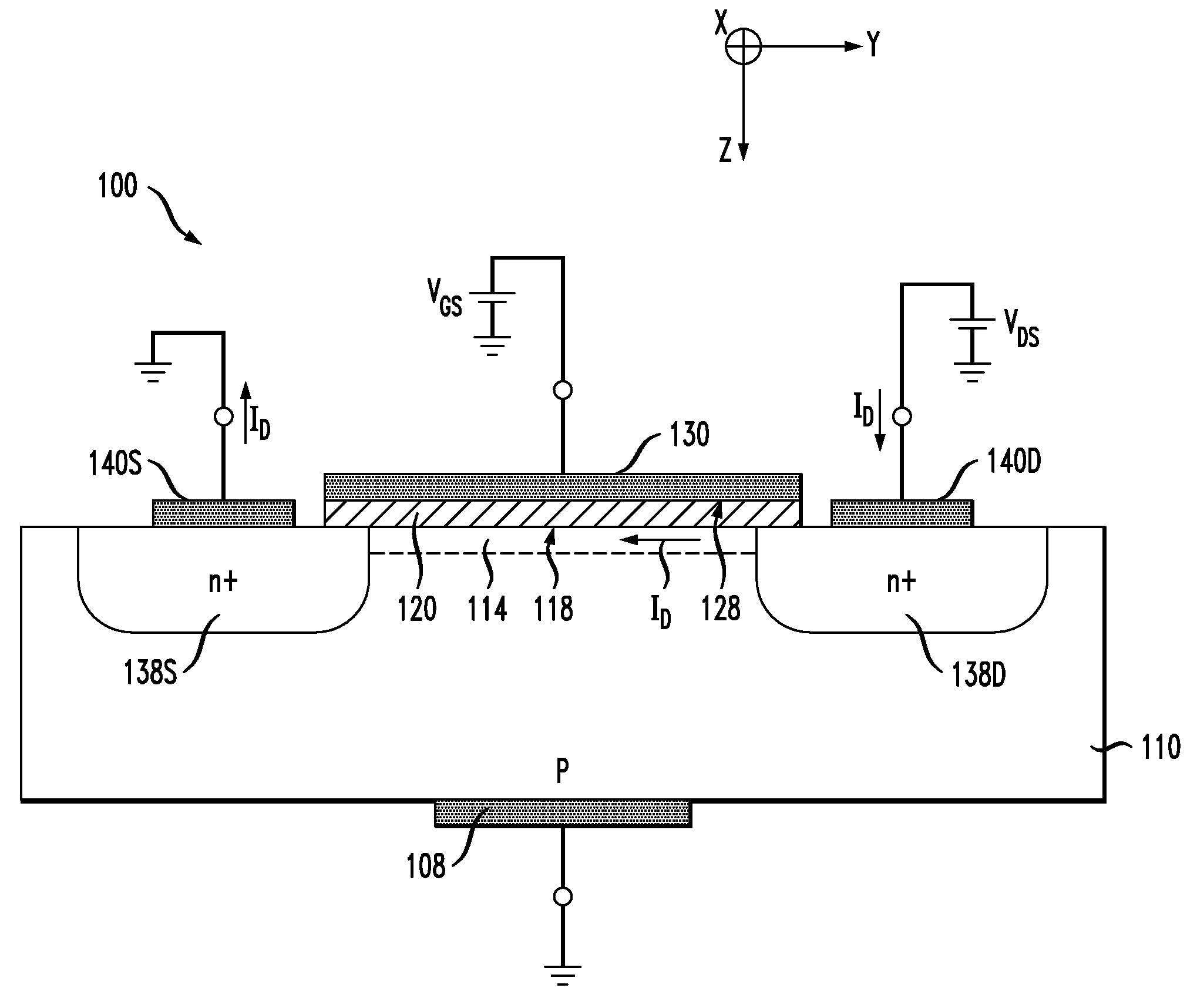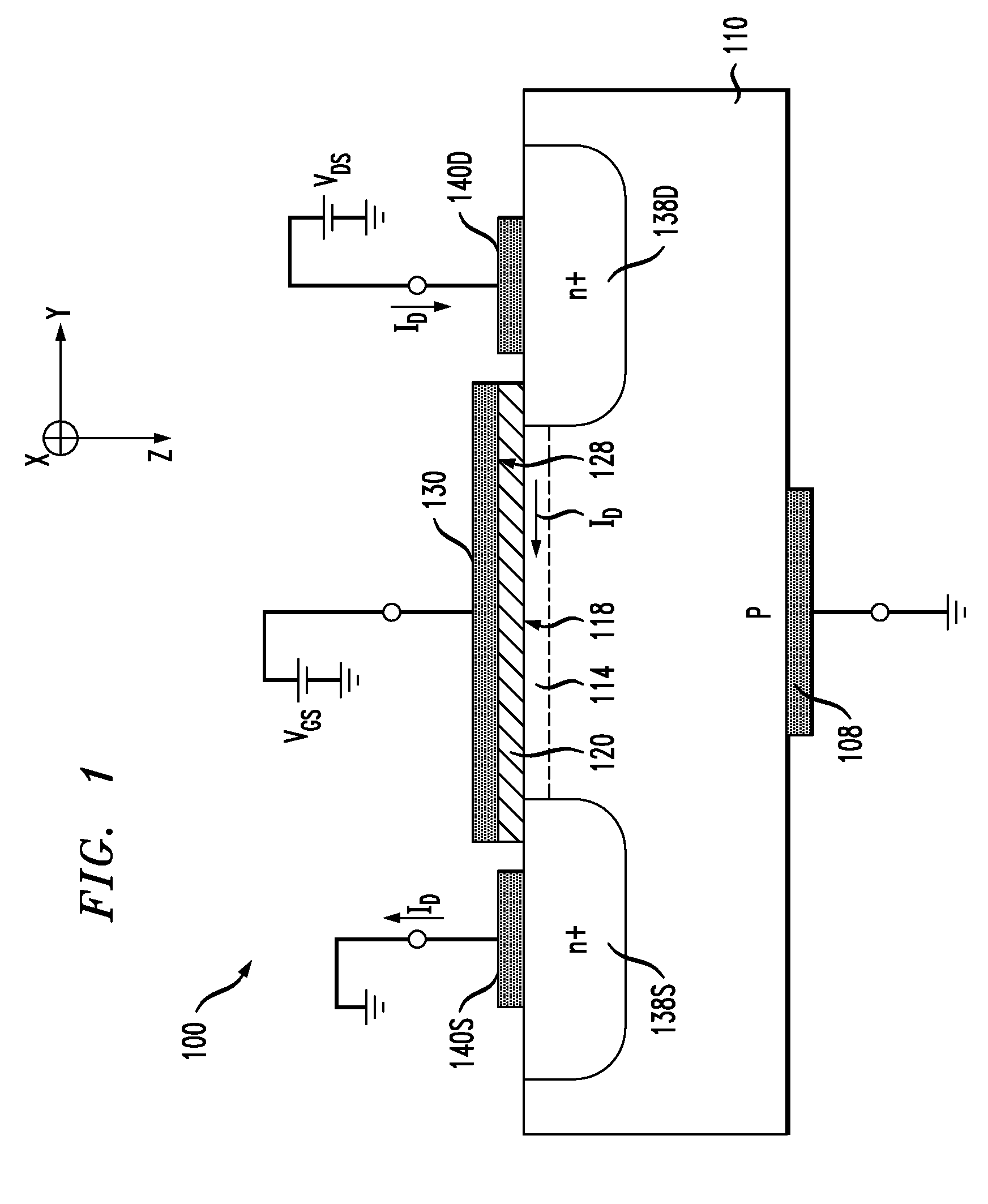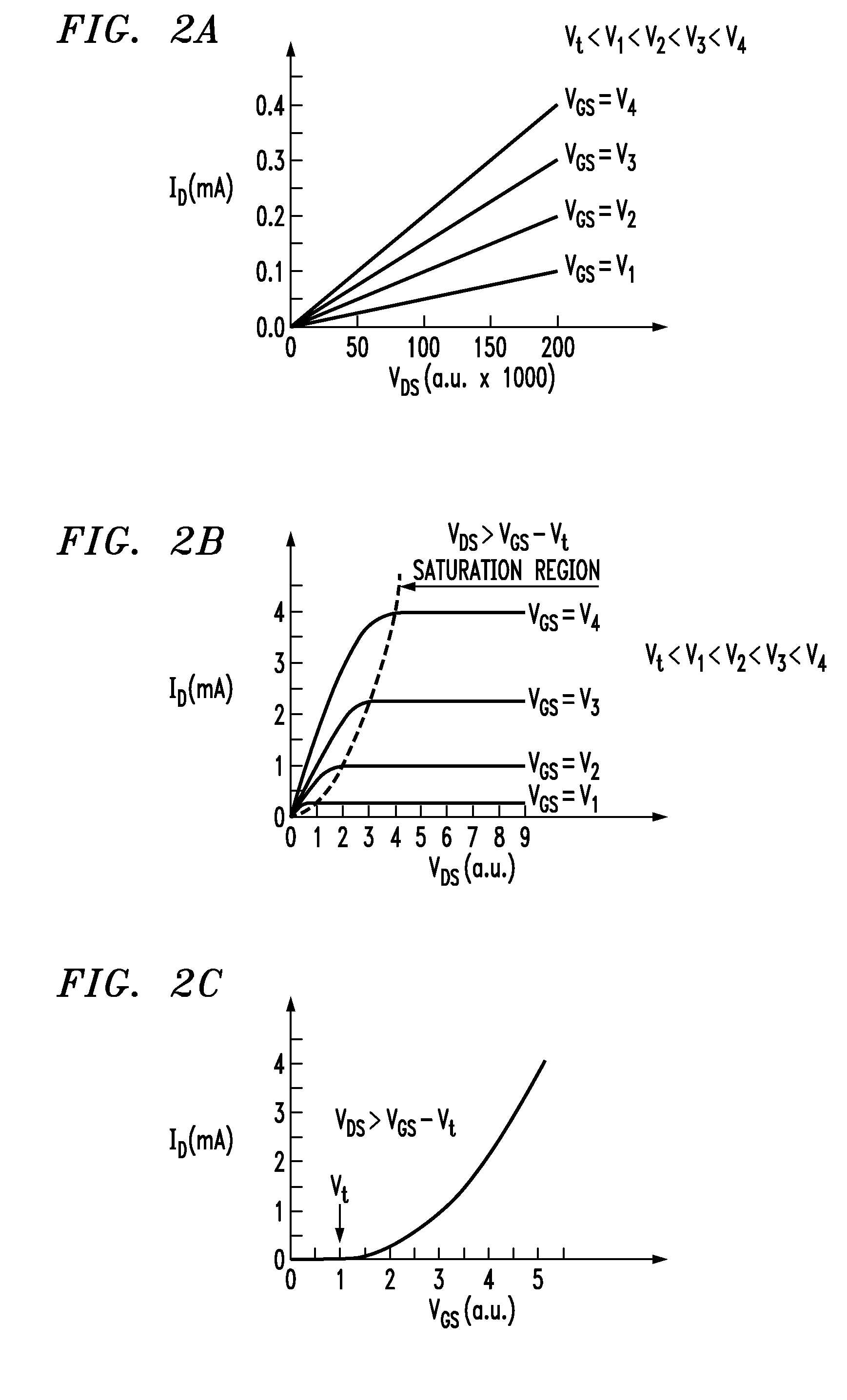Surface-plasmon detector based on a field-effect transistor
a field-effect transistor and detector technology, applied in the field of surface-plasmon signal detectors, can solve the problem that the sp-signal detectors capable of appropriately responding to the full range of available modulation speeds are not yet sufficiently developed, and achieve the effect of small size and efficien
- Summary
- Abstract
- Description
- Claims
- Application Information
AI Technical Summary
Benefits of technology
Problems solved by technology
Method used
Image
Examples
Embodiment Construction
[0017]FIG. 1 shows a cross-sectional side view of a field-effect transistor (FET) 100 according to one embodiment of the invention. FIG. 1 also shows certain representative electrical connections, voltages, and currents that help to explain the operation of FET 100. As further detailed below, FET 100 can be configured using a prior-art method of operation and / or a method of operation according to one embodiment of the invention. These methods are described in reference to FIGS. 2A-C and FIG. 4, respectively.
[0018]In the embodiment of FIG. 1, FET 100 is an n-channel device. In an alternative embodiment, FET 100 can be a p-channel device. As known in the art, n- and p-channel FETs principally conduct through electrons and holes, respectively. While the description below primarily focuses on an n-channel FET, one of ordinary skill in the art will be able to use this description to derive a description applicable to a p-channel FET, e.g., by reversing the polarity of the voltages and cu...
PUM
 Login to View More
Login to View More Abstract
Description
Claims
Application Information
 Login to View More
Login to View More - R&D
- Intellectual Property
- Life Sciences
- Materials
- Tech Scout
- Unparalleled Data Quality
- Higher Quality Content
- 60% Fewer Hallucinations
Browse by: Latest US Patents, China's latest patents, Technical Efficacy Thesaurus, Application Domain, Technology Topic, Popular Technical Reports.
© 2025 PatSnap. All rights reserved.Legal|Privacy policy|Modern Slavery Act Transparency Statement|Sitemap|About US| Contact US: help@patsnap.com



